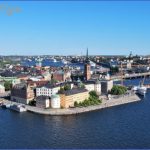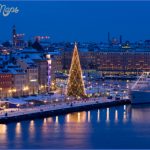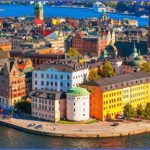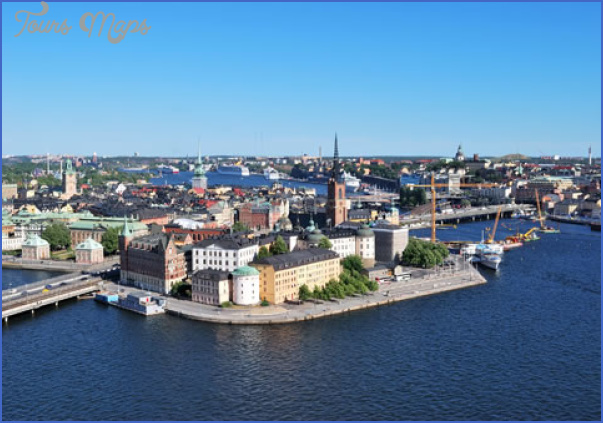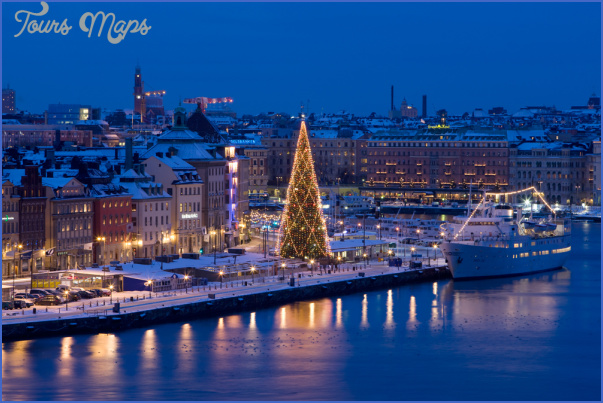In Sweden the churches of the Gothic period tend to be rather low and squat. For large-scale buildings foreign masons were brought in, as in the construction of the Gothic choir of Linkoping Cathedral (by Master Gerlach of Cologne). The second main work of the Gothic period is Uppsala Cathedral (begun about 1250). Considerably later in date are St Birgitta’s Church at Vadstena (1388-1430) and St Peter’s in Malmo (c. 1400).
In Norway the stone churches of both the Romanesque period (Stavanger Cathedral, c. 11 30; Lyse Cathedral, begun 11 46) and the Gothic period (Trondheim Cathedral, rebuilding begun 11 52) follow English models.
The medieval painting of Scandinavia achieves no very distinctive character of its own (altar frontals at Hitterdal, Kinsar-vik, Nes, Dale and Ardal, all dating from 1 250 to 1350), and is represented mainly by wall and ceiling paintings in churches at Jelling, Sasby and Hjorlunde (Zealand), Naestved, Roskilde and Arhus Cathedrals, Kettinge (Maribo) and Kjeldby (St Andrew’s Church) in Denmark, and Va Vidtskofte, Strangnas and Harkeberga in Sweden.
Norwegian sculpture is also of no particular distinction: the carving on the stave churches is a survival of older Germanic traditions, and in the later medieval period Norway imported sculpture from the Netherlands, the Lubeck area (winged altarpieces) and England. Danish Romanesque sculpture, on the other hand, is represented by a remarkable variety of work crucifixes at Aby and Lisbjerg (c. 1100), doorways in Alborg Cathedral (c. 1150), tombstones and some 1500 granite fonts (the splendid lion fonts of Jutland; a beautifully ornamented font at Akirkeby on Bornholm bearing the runic signature of the sculptor). Particularly notable are the so called golden altars of this period (e.g. an altarof around 1150 at Lisbjerg) magnificent examples ofthe goldsmith’s craft, with a profusion of figures and ornament.
Gothic sculpture now increasingly finds expression in wood and ivory rather than stone, and it is often difficult to decide whether a particular item is of French or Danish workmanship (crucifix at Herlufs-holrp, 1250). Later Danish sculpture of the Gothic period is under strong German influence, the most notable examples of this being the altarpiece in Arhus Cathedral by Bernt Notke (c. 1 440-1 509) and the huge altarpiece by Claus Berg (c. 1470-after 1532) in the Greyfriars church (now St Knud’s) in Odense.
Sweden too imported much sculpture from Lubeck from the end of the 14th c. when English and French influence gave place to that of Germany and the Netherlands. Bernt Notke’s masterpiece, the St George group, was created for the Stor-kyrka in Stockholm. Norway also imported sculpture from Lubeck and later from the Netherlands and England (alabaster reliefs).
During the Renaissance and Baroque periods little work of significance was produced in Norway, gifted artists, such as the architect L. van Haven and the sculptor M. Berg, being drawn away to the Danish court. In Sweden after the Reformation church building took second place to the building of castles (Grips-holm, 1573; Vadstena, mainly 17th c.). The style of the Lombard Renaissance was brought to Sweden in the 16th c. by German architects. The finest castle built in the 17th c. largely based on Dutch models, was Drottningholm, the royal summer residence, on Lake Malar. It was begun in 1662 by the Swedish architect Nicodemus Tessin the Elder (1616-after 1685). Other notable buildings of this period are the Palace in Stockholm, in Roman High Baroque, begun by Nicodemus Tessin the Younger (1654-88), with an 18th c. interior; Kalmar Cathedral, by the twoTessins; and Skokloster Castle, near Uppsala (1654-5).
Holiday in Sweden Photo Gallery
Maybe You Like Them Too
- The Best Cities To Visit in The World
- World’s 10 Best Places To Visit
- Coolest Countries in the World to Visit
- Travel to Santorini, Greece
- Map of Barbados – Holiday in Barbados

